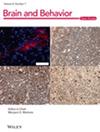Neural Determinants of Sedentary Lifestyle in Older Adults: A Brain Network Analysis
Abstract
Purpose
The prevalence of sedentary lifestyles (SL), which includes both high volumes of extended sitting behavior and a low volume of steps accumulated across the day, among older adults continues to rise contributing to increases in associated comorbidities and the loss of independence. The social, personal, and economic burdens are enormous. In recognition of the health implications of SL, current public health physical activity guidelines now emphasize the complimentary goals of sitting less by moving more. We recently completed a 6-month weight loss (WL) study followed by 12 months of reduced contact to examine weight regain in older adults with obesity. One of the treatment conditions involved WL + a day-long movement intervention that explicitly targeted reducing sitting time and increasing steps across the day (SitLess).
Method
The goal of the current study, using baseline fMRI and accelerometry data from 36 participants and advanced machine learning tools, was to determine if we could identify complex brain circuits underlying variability associated with changes in sitting time and daily steps during the 6-month intensive phase among participants randomized to the WL + SitLess treatment condition. Models generated from these analyses produced accuracy in predicting pre–post change in both measures that exceeded 92%, suggesting a critical role for the identified brain subnetworks in explaining variability in these outcomes in response to the intervention. The identified networks comprised regions, predominantly in the default mode and sensorimotor networks, that have been extensively linked to self-regulation and decision-making.
Finding
These results provide insights into the theoretical basis of SL for older adults and in the design of future intervention research.


 求助内容:
求助内容: 应助结果提醒方式:
应助结果提醒方式:


